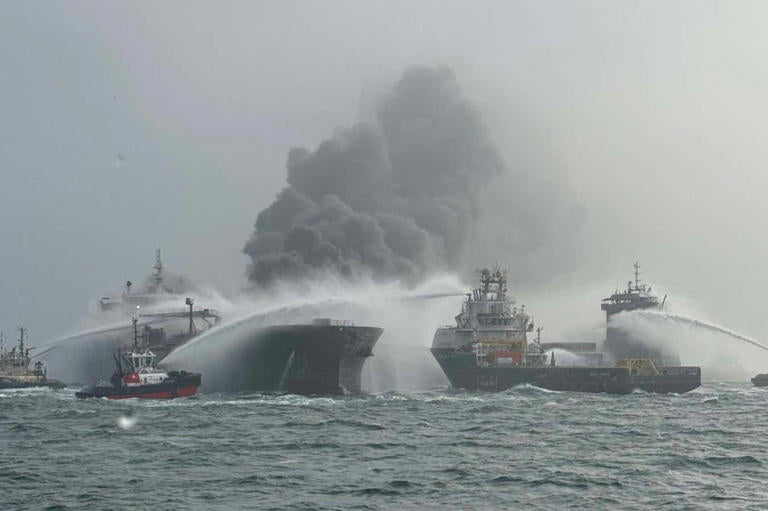
North Sea Ship Collision Raises Fears of Toxic Chemical Spill
Ashton RouthierShare
A catastrophic collision between a cargo ship and a fuel tanker in the UK’s North Sea has raised alarms over a potential environmental disaster. The Stena Immaculate, a tanker carrying 18,000 tonnes of jet fuel, was struck by the container ship Solong on March 10 while moored off the coast of Hull. The Solong, according to Lloyd’s List Intelligence, was transporting 15 containers of highly toxic sodium cyanide, in addition to bunker fuel, heightening concerns over the possible release of hazardous substances into the sea.
The impact caused significant damage to both vessels, igniting massive fires and sending thick clouds of black smoke into the sky. While most crew members were rescued, one sailor from the Solong remains missing.
Environmental Risks and Toxic Hazards
Scientists and environmental groups fear that the crash could have devastating consequences for local marine ecosystems. The area is home to internationally significant populations of breeding seabirds, including gannets, kittiwakes, and puffins. It is also a habitat for grey seals, harbor porpoises, and a key migration route for wading birds and waterfowl.
Paul Johnston of Greenpeace Research Laboratories at the University of Exeter warned that the chemicals on board pose a serious risk to marine life. Sodium cyanide, if released, could severely impact aquatic species by preventing oxygen uptake, while bunker fuel could smother marine habitats and wildlife. Unlike jet fuel, which evaporates relatively quickly, bunker fuel has long-lasting effects that could devastate marine food chains.
While it is unclear whether any sodium cyanide has leaked into the water, the Stena Immaculate has already discharged jet fuel into the sea from a ruptured cargo tank. Officials are now racing to contain any further pollution and minimize environmental damage.
The STW Enviro Perspective: Rapid Response is Critical
At STW Enviro, incidents like this highlight the importance of preparedness and rapid spill response in preventing environmental catastrophes. While authorities are working to assess and contain the damage, proactive solutions could have significantly reduced the risk of widespread contamination.
Our Pristine Sea oil spill response technology is designed for exactly these types of crises, helping to quickly contain hazardous spills and protect fragile marine ecosystems. In a high-risk situation like this, fast-acting spill mitigation efforts are essential to preventing long-term damage to wildlife and coastal communities.
Beyond immediate cleanup efforts, this incident reinforces the importance of stronger maritime safety protocols and enhanced chemical transport regulations. Accidents in ecologically sensitive areas carry severe consequences, and greater investment in emergency response infrastructure is necessary to prevent future disasters.
What Comes Next?
The UK government has launched an urgent investigation into the crash, working closely with the coastguard to assess the extent of pollution and coordinate response efforts. Speaking in Parliament, Baroness Sue Hayman, a minister in the Department for Environment, Food, and Rural Affairs, expressed shock and concern over the incident, emphasizing the need for immediate action.
As the full environmental impact unfolds, authorities and environmental groups must work together to ensure that any hazardous spills are swiftly contained. The North Sea’s marine life is already under pressure from pollution and climate change—preventing further damage must be the top priority.
At STW Enviro, we remain committed to developing and advocating for technologies that help mitigate environmental risks and protect marine ecosystems. While accidents like this are a stark reminder of the dangers posed by hazardous cargo transport, they also highlight the urgent need for better safety measures and rapid-response capabilities to prevent lasting ecological damage.